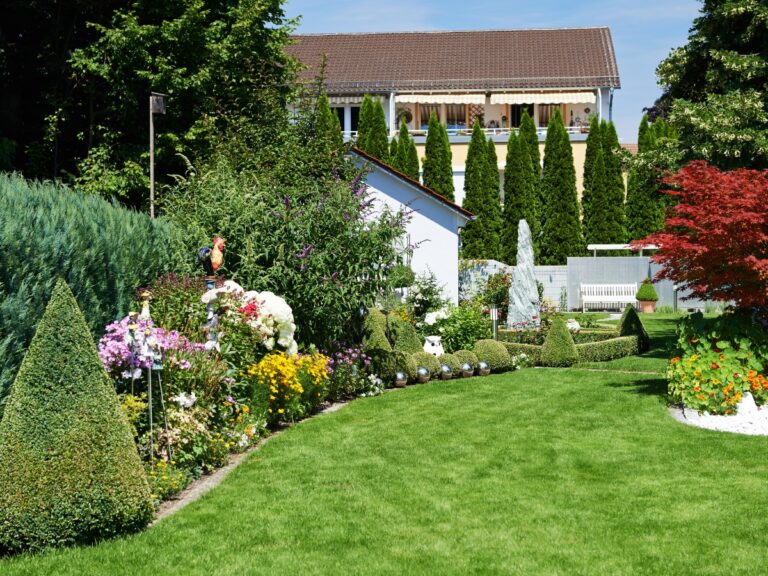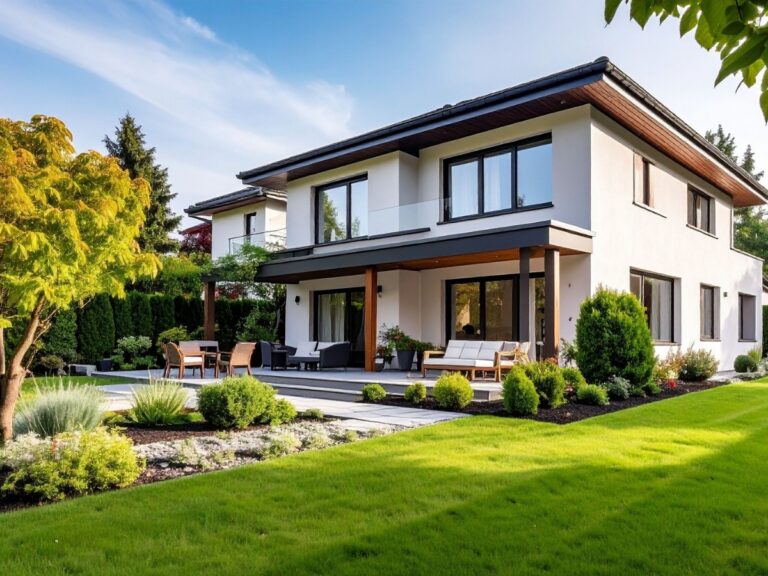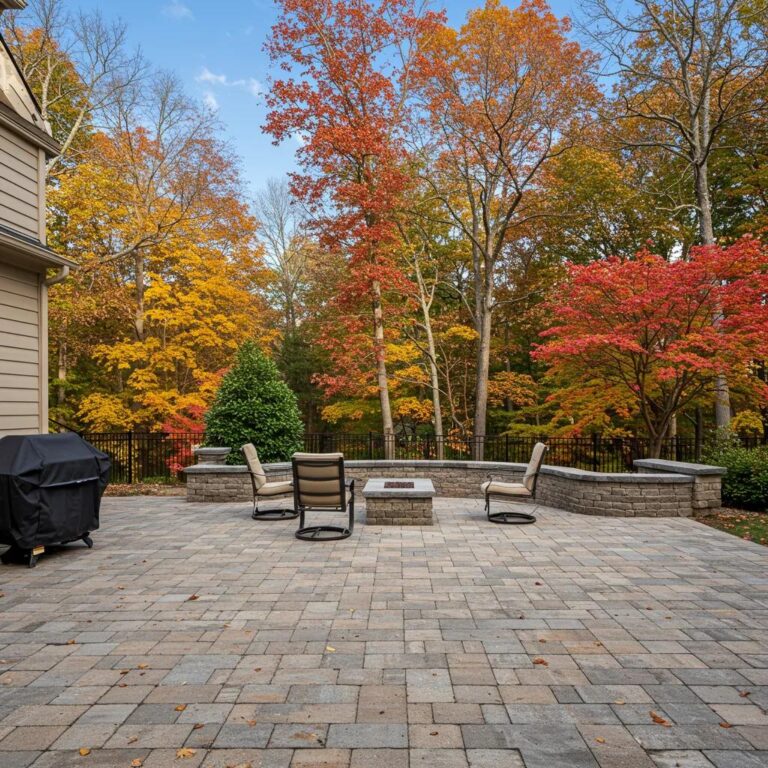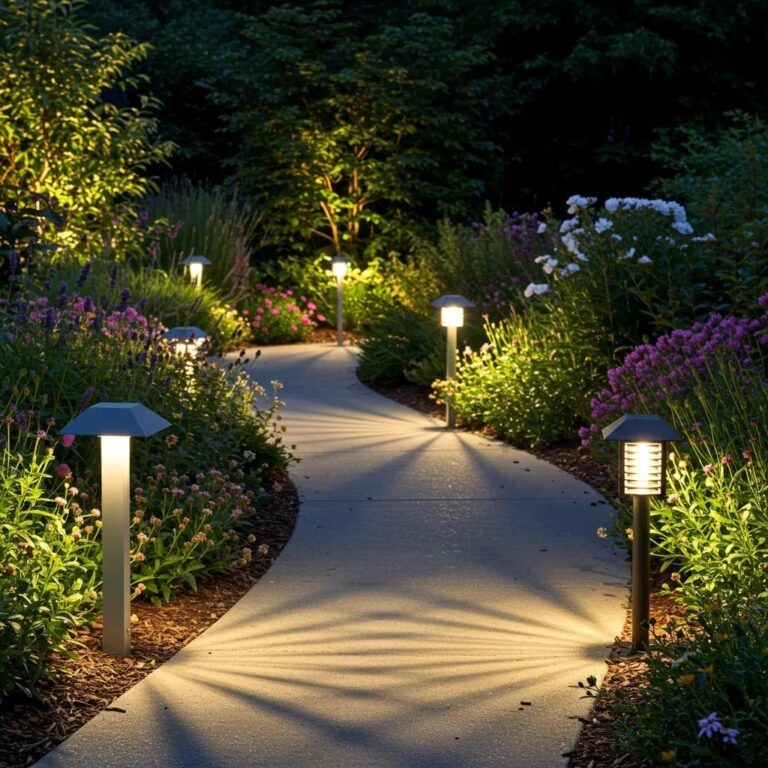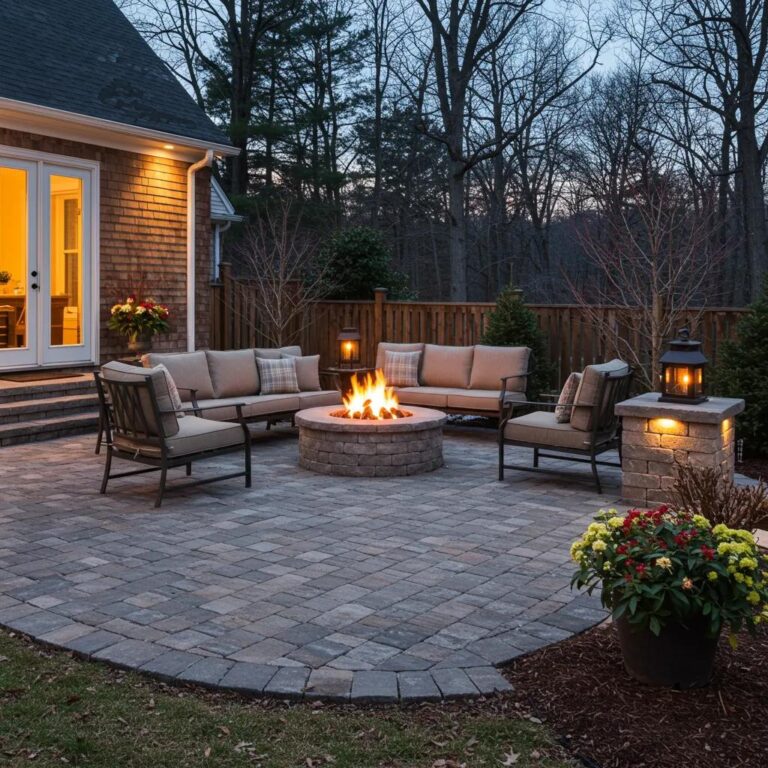Thoughtfully designed pathway lighting does more than just illuminate a walkway—it enhances safety, defines the flow of your landscape, and adds a layer of ambiance that transforms your outdoor space into an enchanting evening retreat. From subtle, low-voltage LED fixtures that guide steps with a soft glow to statement-making solar lanterns and uplighting that highlight architectural or botanical features, the right lighting scheme can elevate both the beauty and functionality of your property. In this guide, we’ll explore creative and practical pathway lighting ideas to help you design a well-lit, welcoming, and visually striking exterior that you can enjoy long after the sun goes down.
Pathway Lighting Ideas for a Stunning Outdoor Ambiance
Why Pathway Lighting is a Must-Have for Your Outdoor Space
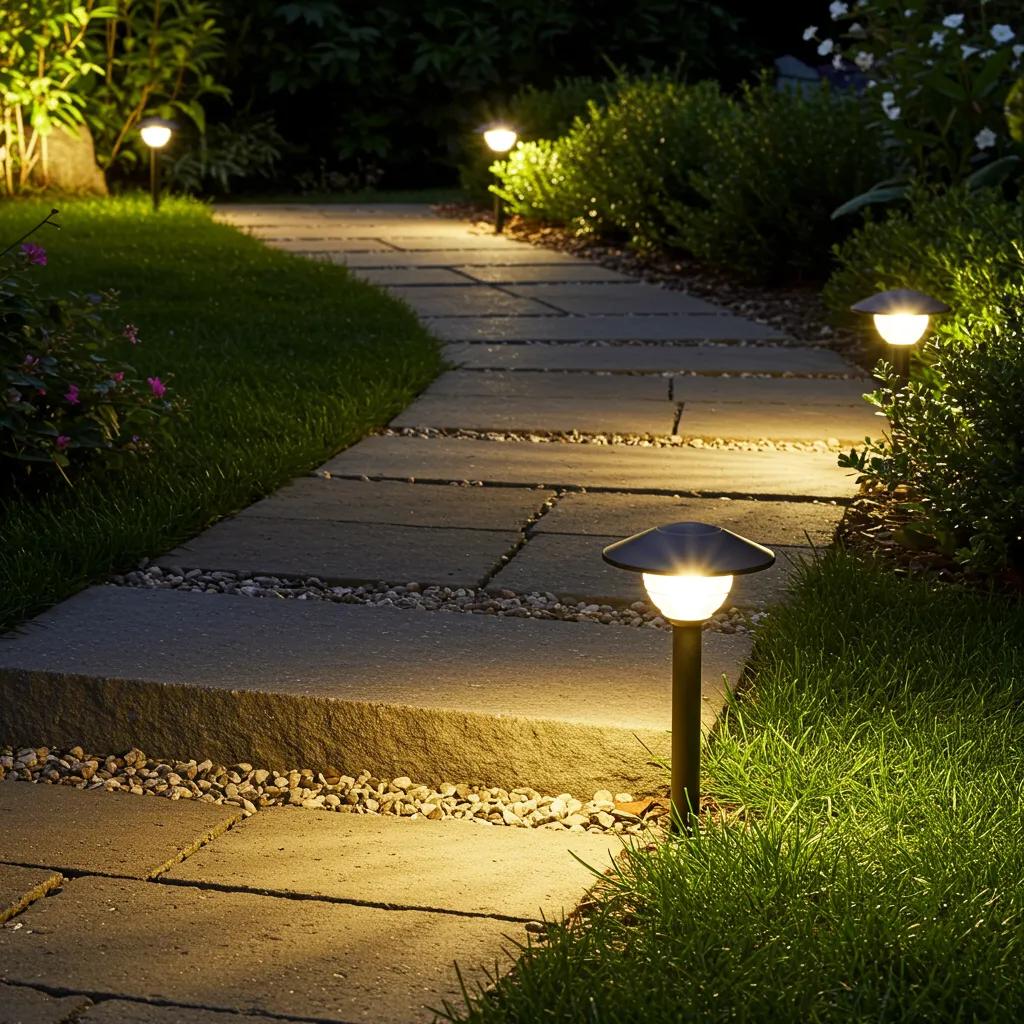
Pathway lighting does more than illuminate walkways—it brings structure, safety, and beauty to your outdoor environment. Well-placed fixtures guide guests safely through your property while drawing attention to the textures and details that make your landscaping unique. By casting soft, directional light along walkways, garden borders, and driveways, pathway lighting helps define architectural features and adds depth to your hardscape design.
A simple row of low-voltage LED lights along a stone walkway can completely transform how your yard looks and feels after dark. When done right, this type of lighting ties together design elements while enhancing both functionality and ambiance. Understanding how lighting interacts with your materials and landscape layout is key to achieving the perfect balance between safety and aesthetics.
How Pathway Lighting Elevates Your Home’s Appeal and Value
Strategically designed lighting instantly enhances curb appeal, creating a warm and inviting atmosphere that impresses visitors and potential buyers alike. Pathway lighting highlights the texture of stone pavers, the contours of garden beds, and the craftsmanship of your outdoor features. Subtle uplighting can draw attention to water features, sculptures, or architectural details, giving your home a refined, high-end appearance.
A well-lit landscape also communicates quality and care. Prospective buyers often associate thoughtful outdoor lighting with professional maintenance, which can boost the perceived value of your property. Beyond beauty, it’s a practical investment that adds long-term value and elevates your home’s nighttime presence.
How Pathway Lighting Improves Safety and Security
While pathway lighting contributes to your home’s aesthetics, it also plays a critical role in safety. Properly positioned lights make steps, edges, and uneven surfaces visible, reducing the risk of trips or falls. Consistent illumination helps prevent dark spots that could cause disorientation or accidents, particularly around stairs and entryways.
From a security standpoint, lighting acts as a natural deterrent. Bright, evenly distributed light eliminates dark areas where intruders might hide. Motion-sensing lights can further enhance protection by triggering illumination when movement is detected, alerting you to activity around your property. In this way, pathway lighting provides both beauty and peace of mind.
How Pathway Lighting Extends Outdoor Living
Adding pathway lights allows you to fully enjoy your outdoor spaces long after sunset. Gentle, warm illumination makes patios, decks, and garden paths more inviting, creating the perfect setting for evening gatherings or quiet relaxation. The glow from bollard or in-ground lights can transform an ordinary walkway into a scenic nighttime feature.
By improving visibility and ambiance, pathway lighting extends the usability of your yard, turning it into a functional and enjoyable living area. Whether you’re hosting guests or enjoying a quiet evening outdoors, the right lighting enhances both comfort and atmosphere, ensuring that your landscape remains just as beautiful at night as it is during the day.
Discover the Most Popular Pathway Lighting Styles and Ideas
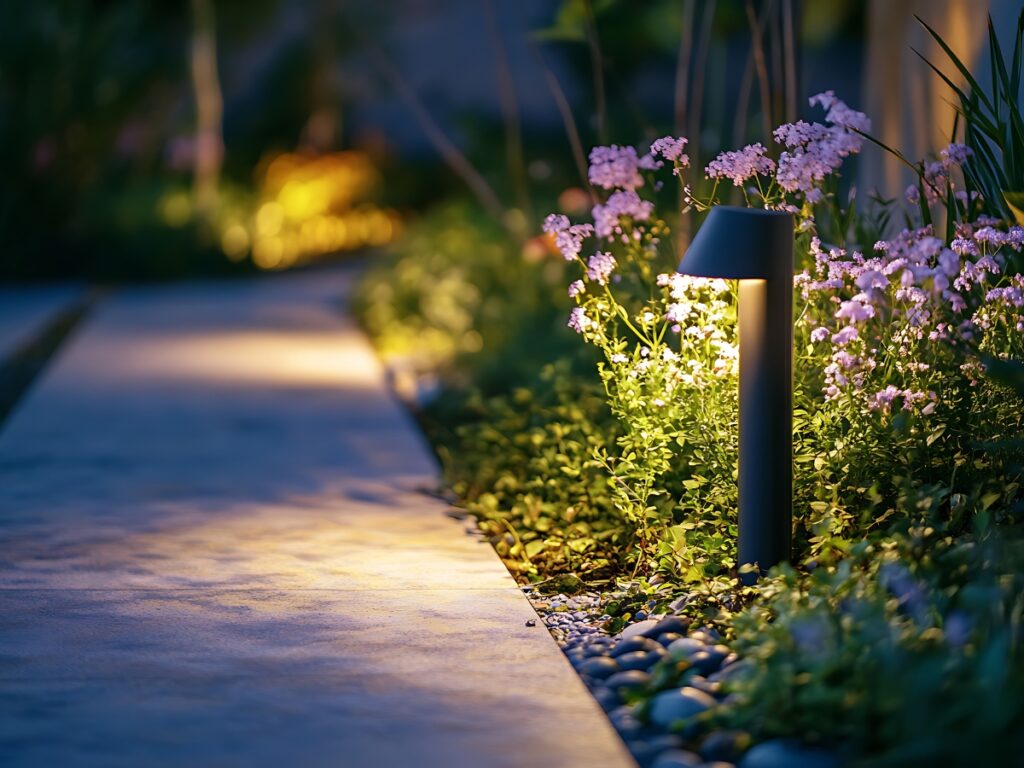
Pathway lighting ideas can completely transform how your outdoor space looks and feels after dark. Whether your taste leans toward sleek and modern or warm and rustic, the right lighting style enhances both aesthetics and function. From minimalist fixtures that blend seamlessly into hardscapes to classic lanterns that add charm and character, pathway lighting is about creating balance. When chosen thoughtfully, these fixtures illuminate walkways, highlight architectural details, and bring depth to your landscape design.
What Defines Modern and Minimalist Pathway Lighting Designs?
Modern and minimalist pathway lighting focuses on simplicity and precision. These fixtures are known for their clean lines, understated finishes, and purposeful light direction. Often made of durable materials like aluminum or stainless steel, modern pathway lights typically feature matte or metallic finishes that pair well with contemporary landscapes.
Instead of drawing attention to the fixture itself, these designs emphasize subtle illumination that complements geometric paving and architectural features. Slim, low-profile lights can be installed directly into pathways for an uncluttered look, while discreet strip lighting along benches or steps adds a refined, ambient touch. The goal is to achieve a cohesive, streamlined aesthetic that feels modern without overpowering your outdoor environment.
How Do Traditional and Classic Fixtures Enhance Garden Path Lighting?
Classic pathway lighting ideas draw inspiration from timeless design elements, using lantern-style fixtures, bronze finishes, and softly diffused light to create a welcoming atmosphere. These lights often feature glass panels or decorative metalwork that cast a warm, inviting glow across stone or brick paths.
Traditional lighting pairs especially well with established gardens and historic-style homes. The glow of a lantern-style fixture can enhance the textures of natural stone and wood, creating an elegant contrast between light and shadow. When spaced evenly along a walkway or mounted on short posts, traditional fixtures add structure and rhythm to your landscape while maintaining an inviting, familiar appeal.
What Are Rustic and Nature-Inspired Pathway Lighting Ideas?
For outdoor spaces that embrace organic materials and earthy tones, rustic pathway lighting offers an ideal solution. These designs often use weathered finishes, reclaimed wood, or copper that naturally patinas over time. Fixtures may mimic natural forms, such as carved stone or log-inspired shapes, which blend effortlessly with gardens, woodland paths, or country-style patios.
Warm-toned LED lights complement this aesthetic by producing a gentle, firelight-like glow that enhances the natural surroundings. When placed among plants or beside gravel walkways, rustic fixtures create a harmonious, grounded look that feels both relaxed and intentional.
How to Integrate Pathway Lighting Into Hardscape Design
One of the most effective ways to elevate your outdoor lighting design is by integrating fixtures directly into your hardscape. Built-in lighting channels within steps or retaining walls provide subtle guidance without visual clutter. Low-voltage LEDs can be embedded into paver joints or beneath wall caps to create a soft, continuous line of light.
This type of seamless installation highlights your landscape’s best features while ensuring safety and visibility. The result is a cohesive lighting system that feels like a natural extension of your design, enhancing both the functionality and visual appeal of your outdoor space.
Exploring different pathway lighting ideas can help you strike the perfect balance between beauty and practicality. Whether you prefer clean modern lines, timeless elegance, or a natural rustic touch, the right lighting transforms your walkways into focal points that enhance your home’s nighttime charm and usability. Thoughtful design and integration make pathway lighting one of the most rewarding outdoor upgrades you can invest in.
How to Choose the Perfect Pathway Lighting for Your Landscape
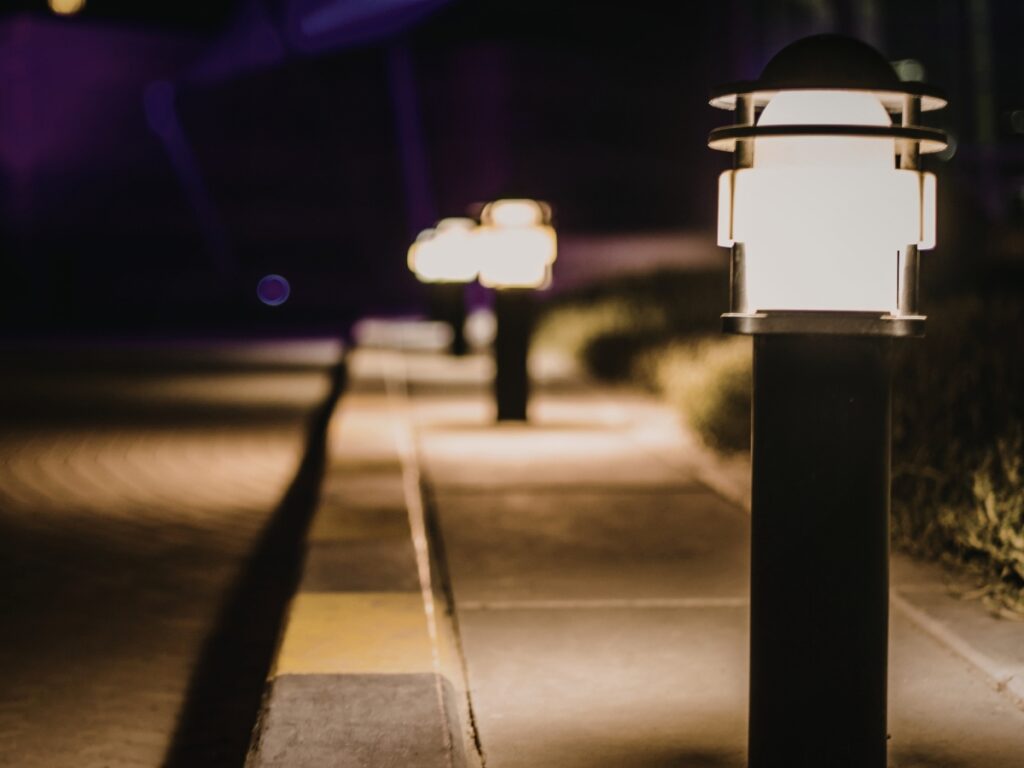
Choosing the right pathway lighting starts with understanding how function, design, and materials work together to create both beauty and safety. The best pathway lighting ideas balance durability with style while ensuring the lights complement your landscape architecture. Factors like your power source, desired brightness, and fixture placement all play an important role in the final look. Whether you’re considering solar, low-voltage, or LED options, matching the right technology to your environment ensures long-lasting performance and consistent illumination throughout your outdoor space.
What Are the Differences Between Solar, Low-Voltage, LED, and Smart Pathway Lights?
Each type of pathway light offers distinct advantages depending on your goals and setup. Solar pathway lights are easy to install and operate independently of your home’s electrical system, making them ideal for areas without nearby outlets. However, they rely heavily on sunlight, which can limit brightness in shaded spaces. Low-voltage lighting systems provide reliable, consistent illumination and allow greater control over placement, though they require some wiring and a transformer.
LED pathway lighting has become the standard for energy efficiency and long lifespan, offering bright, focused light with minimal maintenance. Many LED fixtures also allow for customizable color temperatures to match your desired ambiance. Smart lighting options go a step further by integrating with Wi-Fi or Bluetooth systems, letting you adjust brightness, scheduling, and color from a mobile device. Understanding these differences helps you select lighting that suits both your design and functional needs.
Why Material Choices Matter for Durability and Style
The material of your pathway lighting directly affects how well it stands up to weather conditions and how it complements your overall design. Stainless steel fixtures provide a modern look and exceptional resistance to corrosion, making them ideal for coastal or humid environments. Copper lighting is prized for its ability to develop a natural patina over time, adding character and charm that blends beautifully with rustic or traditional landscapes. Aluminum is a lightweight and affordable choice, though it benefits from a powder-coated finish to protect against UV exposure and corrosion.
By considering both climate and aesthetic preferences, you can choose materials that maintain their appearance while withstanding outdoor elements for years to come.
How Color Temperature and Brightness Shape Outdoor Ambiance
The color and intensity of your lighting dramatically influence the mood of your outdoor space. Warm white tones around 2700 to 3000 Kelvin create a cozy, inviting atmosphere perfect for garden paths and entertainment areas. Cooler white light, around 4000 to 5000 Kelvin, delivers a crisp and modern look that enhances visibility and accentuates architectural features.
Brightness, measured in lumens, determines how much coverage your fixtures provide. Softer lighting works best for intimate walkways and patios, while brighter illumination suits larger spaces or entryways. The key is to balance light output so your paths feel safe and well-lit without overpowering the natural beauty of your landscape.
Selecting the right pathway lighting ideas involves more than just aesthetics—it’s about finding the perfect combination of performance, efficiency, and durability. By carefully choosing the power type, materials, and color temperature, you can create an outdoor lighting system that enhances both functionality and style. The result is a beautifully illuminated pathway that makes your landscape more welcoming, secure, and visually cohesive at any hour of the night.
What You Need to Know About Professional Pathway Lighting Installation
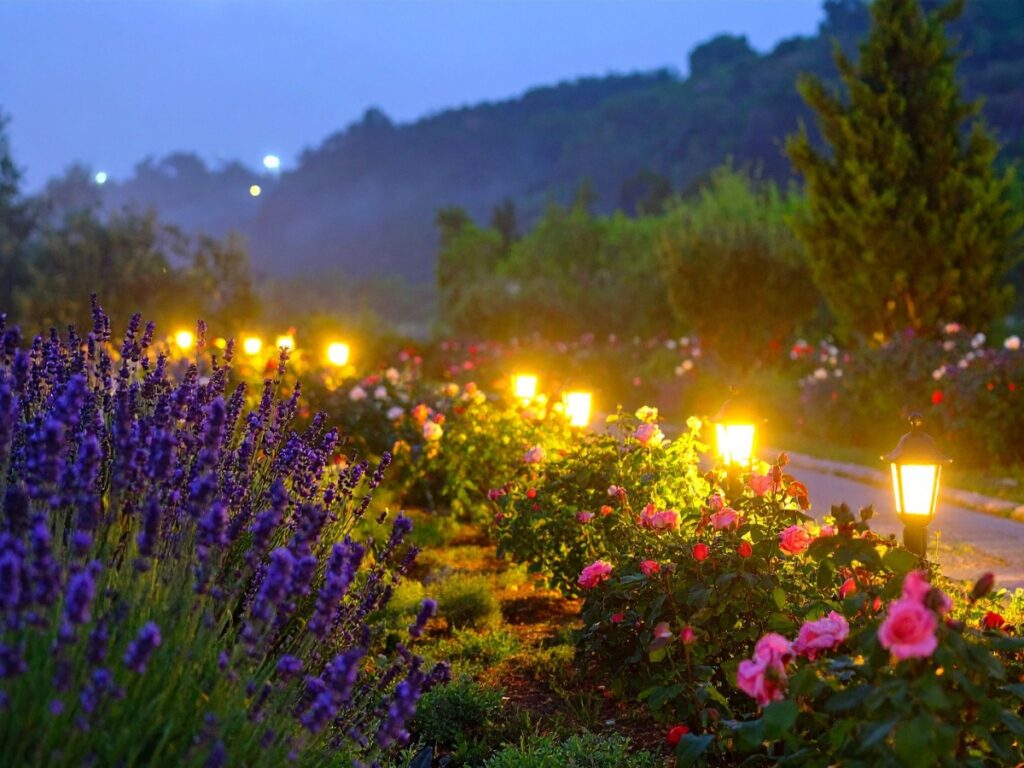
Professional pathway lighting installation encompasses a comprehensive process including site assessment, meticulous layout design, expert fixture selection, precise trenching, secure wiring, and final system commissioning. Expert installers ensure compliance with local codes, optimal cable routing, and waterproof connections, guaranteeing reliable, long-term performance. Homeowners benefit from customized solutions that integrate flawlessly with existing hardscape features and landscape contours.
What Is the Design Process for Custom Pathway Lighting by Atlanta Hardscape Kings?
Atlanta Hardscape Kings kicks off every pathway lighting project with a thorough on-site consultation to evaluate your terrain, existing hardscapes, and your specific homeowner goals. The design phase includes detailed digital renderings that map out fixture placements, beam spreads, and wiring routes. Client feedback is crucial for refining fixture styles, light levels, and control options before installation commences. This collaborative approach ensures the final layout perfectly complements both your home’s architecture and your landscape.
Which High-Quality Products and Fixtures Are Used in Expert Installations?
Seasoned professionals exclusively use premium fixtures from trusted manufacturers, featuring marine-grade housings, robust die-cast alloy bodies, and securely sealed connectors. LED modules with high color-rendering indexes guarantee true color fidelity for your plants and building materials. Motion sensors, dimmers, and programmable timers are carefully selected to match your preferences for control and energy savings. These top-tier product choices deliver decades of consistent, reliable illumination with minimal upkeep.
How Does Local Expertise Benefit Metro Atlanta Homeowners?
Local installers possess invaluable knowledge of Georgia’s unique climate, soil conditions, and seasonal landscaping demands. They expertly select corrosion-resistant fixtures suited for humid summers and occasional freezes, and meticulously route wiring to protect the root systems of native trees. Licensing, insurance, and familiarity with municipal permitting processes streamline project timelines. Homeowners gain complete peace of mind knowing their pathway lighting is optimized for the specific challenges and beauty of the metro Atlanta area.
How to Maintain and Troubleshoot Your Pathway Lighting System
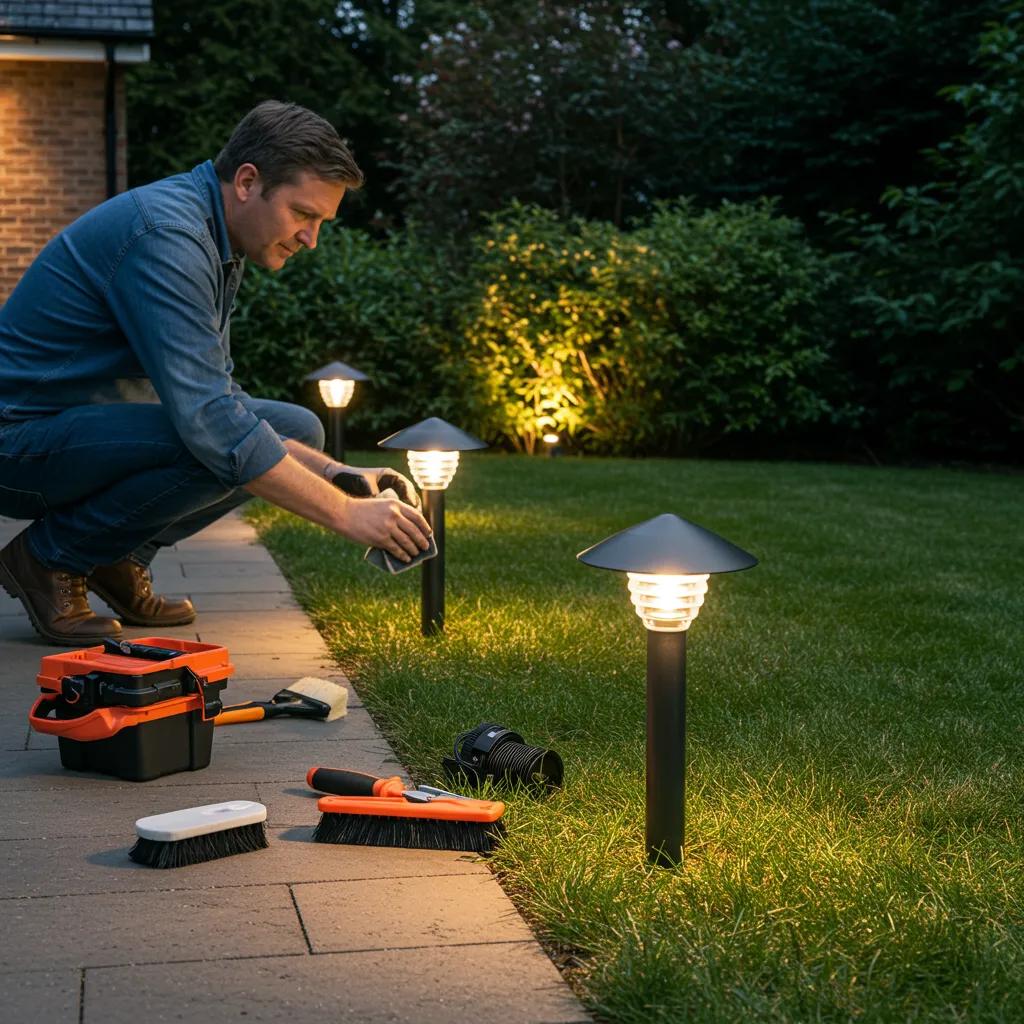
Keeping your pathway lighting in good condition ensures consistent performance, safety, and long-term reliability. Like any outdoor feature, these systems are exposed to weather, debris, and normal wear over time. With a few simple maintenance routines and troubleshooting techniques, you can keep your lighting looking great and working efficiently throughout the year. Regular care helps prevent minor issues from turning into costly repairs and ensures your landscape remains both beautiful and functional after dark.
What Are the Best Practices for Pathway Lighting Maintenance
Routine upkeep is essential to preserve the quality and brightness of your lights. Start by cleaning the lenses to remove dirt, water spots, or insect debris that can dull illumination. Check all wiring for wear or corrosion, especially in areas exposed to moisture or soil. Verify that your transformer is set to the correct voltage and that all connections remain tight.
Vegetation control is another important step. Trim back grass, shrubs, or branches that might block light or damage fixtures. If your lighting system includes metal housings, apply a protective coating or sealant based on manufacturer recommendations to prevent rust. Performing these checks twice a year—typically in spring and fall—will help your fixtures maintain their brightness and extend their lifespan.
How Do You Troubleshoot Common Lighting Issues
Even well-maintained systems can experience occasional problems. Flickering, dimming, or nonfunctional lights are often the result of a loose connection, low voltage, or a faulty transformer. Begin by testing your circuit breakers to ensure power is being supplied correctly. Next, check the transformer’s output with a voltage meter to verify it’s operating within the recommended range.
Inspect all wiring for signs of moisture or corrosion, especially at connection points and crimps. If one or more lights are out, try replacing the bulb or LED module with a compatible model approved by the manufacturer. In many cases, these basic steps will resolve the issue quickly without requiring major repairs.
When Should You Consider Professional Repairs or Upgrades
Some issues go beyond what you can easily fix on your own. If your system suffers from frequent outages, recurring voltage drops, or visible wiring damage, it’s time to call in a professional. Corrosion inside fixtures, cracked lenses, or repeated transformer failures often indicate that your system is aging and may need a full inspection.
Upgrading older halogen fixtures to energy-efficient LED options can improve both performance and longevity. Many homeowners also take this opportunity to modernize their systems with smart controls, allowing for adjustable brightness and automated scheduling. These updates not only simplify maintenance but also reduce long-term energy costs while improving the overall look and convenience of your lighting setup.
Pathway lighting maintenance doesn’t have to be complicated. With regular cleaning, inspections, and prompt attention to minor issues, your system can deliver years of dependable illumination. Understanding how to troubleshoot common problems and recognizing when upgrades are due will keep your outdoor spaces safe, welcoming, and visually appealing. Whether your setup is simple or fully integrated with smart features, proper care ensures your pathway lighting continues to perform beautifully season after season.
What Are the Benefits of Professional Pathway Lighting Over DIY Solutions?
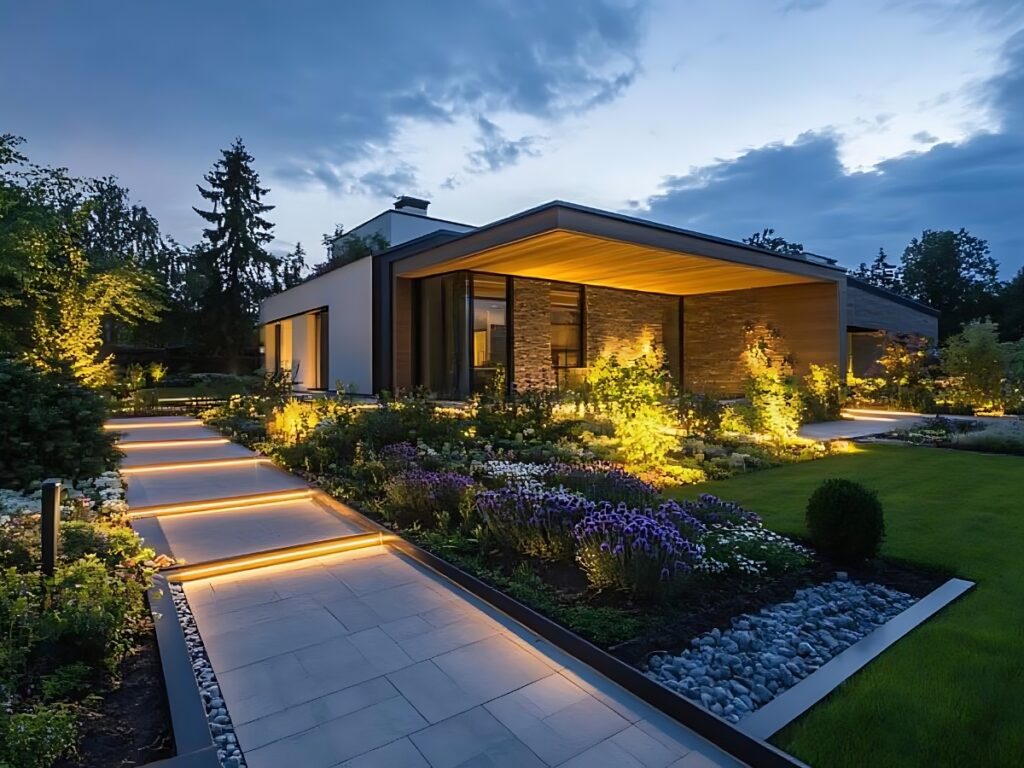
Professional pathway lighting delivers precision, unwavering reliability, and sophisticated design refinement that DIY approaches often struggle to achieve. Expert installers expertly blend electrical know-how with keen aesthetic sensibility to create cohesive, captivating lighting narratives. By expertly handling permits, wiring, and waterproofing, they prevent code violations and safety hazards, ensuring truly long-lasting, beautiful results.
How Does Professional Lighting Enhance Safety and Navigation?
Professionals meticulously calculate illumination levels, beam angles, and fixture placement to eliminate glare, dark spots, and unintended shadowing. This scientific approach guarantees uniform, consistent coverage across walkways, stairs, and entry points. The result is a significantly safer outdoor environment where guests and household members can navigate with complete confidence after dusk.
In What Ways Does Professional Installation Improve Energy Efficiency?
Professional lighting plans optimize fixture selection, cable length, and transformer capacity to minimize voltage drop and prevent energy waste. Installing low-voltage LED modules paired with programmable timers and motion sensors dramatically reduces power consumption. Homeowners enjoy significantly lower utility costs and a reduced carbon footprint without sacrificing any performance.
How Does Professional Lighting Increase Outdoor Living Value and Enjoyment?
By expertly integrating lighting into patios, driveways, and garden features, professionals transform ordinary yards into versatile, inviting living areas perfect for evening use. High-quality illumination encourages social gatherings, outdoor cooking, and peaceful relaxation under the stars. The uplift in functionality and ambiance directly translates into greater homeowner satisfaction and significantly enhanced resale appeal.
What Are the Latest Trends and Innovations in Outdoor Pathway Lighting
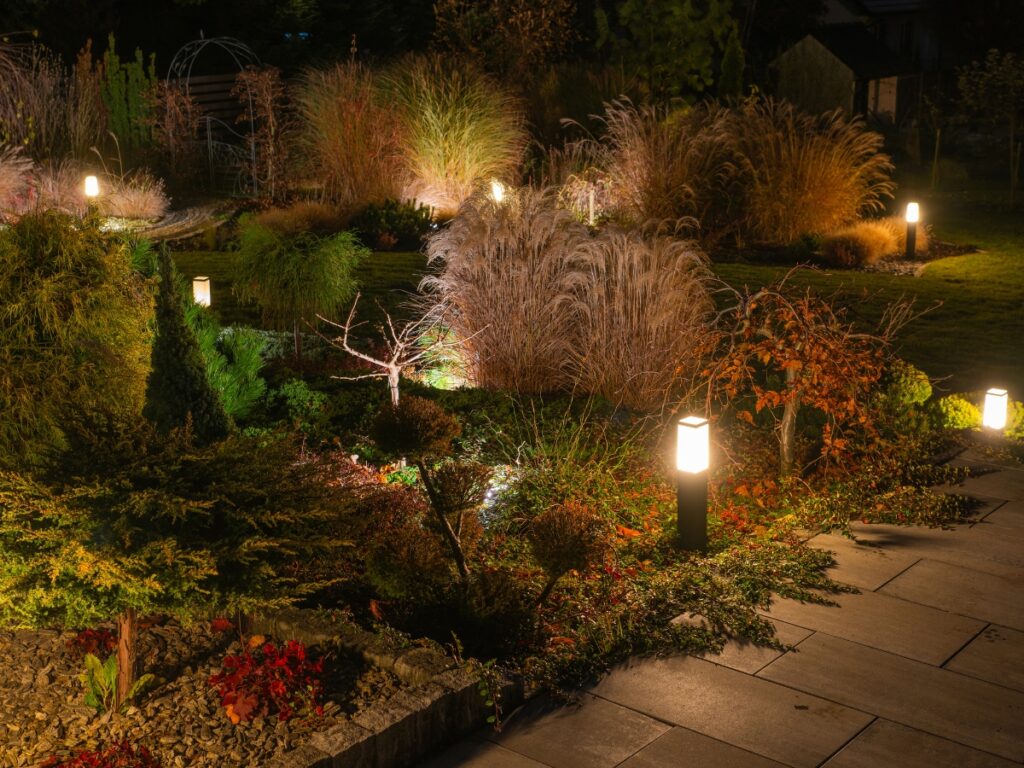
Outdoor lighting is evolving quickly, driven by advances in technology and a growing focus on energy efficiency and design flexibility. Homeowners today want lighting solutions that not only look good but also offer convenience, durability, and sustainability. The newest pathway lighting ideas combine smart technology, eco-friendly materials, and innovative styles to create spaces that are both functional and visually appealing. Keeping up with these developments can help ensure your outdoor areas remain modern and efficient.
How Are Smart Lighting Systems Changing Outdoor Illumination?
Smart lighting has transformed how homeowners interact with their outdoor spaces. Through smartphone apps or voice assistants, you can now control brightness levels, adjust color temperatures, and set schedules with ease. These systems often include features like motion sensors or geo-fencing, which automatically turn lights on when you arrive home and off when you leave.
Beyond convenience, smart lighting also improves security by ensuring your walkways and entry points are always well-lit. The ability to customize and automate your lighting helps reduce energy waste while providing flexibility to create different moods for gatherings, relaxation, or safety.
Why LED Technology Remains the Top Choice for Pathway Lighting
LED technology continues to dominate modern pathway lighting for its efficiency, longevity, and design versatility. LEDs consume far less energy than traditional halogen or incandescent bulbs, often reducing energy use by up to 80 percent. Their long lifespan—often reaching 50,000 hours or more—means fewer replacements and lower maintenance costs over time.
Another advantage is their precision. LEDs can be directed exactly where light is needed, minimizing glare and reducing light pollution. Many LED fixtures also offer adjustable color temperatures, allowing you to create warm, inviting tones or cooler, modern effects depending on the look you want. Compact designs make them suitable for a range of styles, from recessed step lights to minimalist in-ground fixtures.
What New Materials and Styles Are Shaping Pathway Lighting Design?
As outdoor design trends move toward sustainability and innovation, manufacturers are introducing new materials that combine performance with environmental responsibility. Recycled composites, weather-resistant metals, and carbon-fiber accents are becoming more common in fixture construction. These materials enhance durability while maintaining a sleek, modern appearance.
Solar technology is also playing a larger role in outdoor lighting design. Integrated solar panels and rechargeable batteries now allow fixtures to operate without external wiring, making installation simpler and more sustainable. Some of the latest designs even embed LED lights directly into glass or stone pavers, turning pathways into glowing architectural features that blend seamlessly into the landscape.
The latest pathway lighting ideas are all about merging technology with design. Smart systems, efficient LED fixtures, and sustainable materials are setting new standards for outdoor lighting performance and aesthetics. Whether you’re aiming for a contemporary look or a natural feel, these innovations make it easier than ever to create a safe, stylish, and energy-efficient outdoor environment that enhances your home both day and night.
How Far Apart Should Pathway Lights Be Placed for Optimal Illumination?
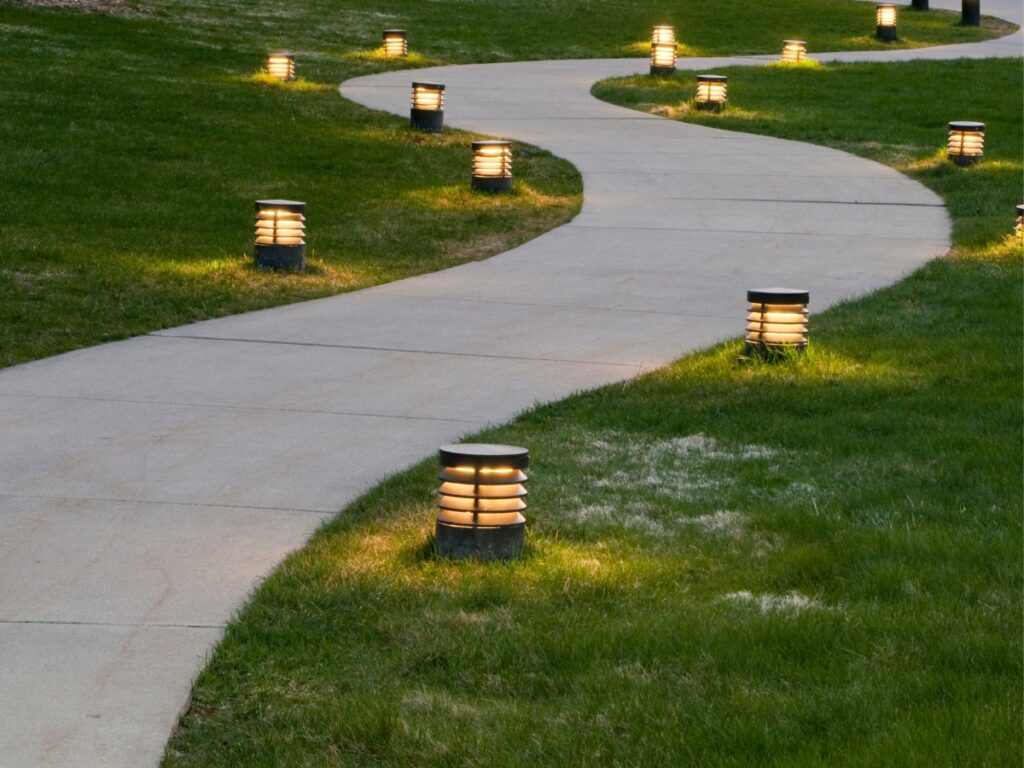
Getting the spacing right for pathway lighting is essential for creating a balanced, inviting look. Lights placed too close together can make a walkway look harsh and overlit, while fixtures that are too far apart can leave uneven patches of darkness. The goal is to achieve a steady flow of illumination that guides movement naturally and highlights the path’s shape without overwhelming it. A well-planned layout ensures visibility, safety, and visual appeal, no matter the time of night.
What Factors Influence Pathway Light Spacing?
Several variables determine how far apart pathway lights should be placed. Fixture design, light output, and beam spread all play a part in achieving even illumination. A wider beam angle allows you to place lights farther apart, while narrow beams concentrate light and require closer spacing for full coverage. The brightness of each fixture, measured in lumens, also affects how much ground it can effectively illuminate before shadows form between lights.
Mounting height is another factor to consider. Low-profile fixtures cast shorter beams that work best with tighter spacing, while taller lights project illumination farther across a walkway. The width of your path also matters—wider walkways typically need staggered lighting on both sides to ensure consistent light coverage. Taking all these factors into account helps create a cohesive lighting effect that feels both functional and natural.
How Custom Lighting Plans Improve Spacing and Design
Creating an effective lighting layout often requires more than just guesswork. Custom lighting plans use detailed mapping and light distribution modeling to calculate ideal fixture placement. By understanding how each light interacts with its surroundings—such as curves, steps, or elevation changes—you can ensure uniform brightness along every section of the path.
This type of planning not only improves safety but also enhances visual impact. For example, lights placed along gentle curves can subtly lead the eye, while those near steps or retaining walls provide practical illumination where it’s needed most. A tailored design ensures that no part of your walkway feels neglected or overexposed, resulting in a professional, polished finish.
Why Thoughtful Spacing Matters for Your Landscape
Proper spacing does more than ensure visibility—it sets the tone for your outdoor environment. Evenly distributed lights create a calm, inviting atmosphere that complements your landscape design. Strategic placement can highlight architectural details, draw attention to surrounding plants, and help define the shape of your outdoor pathways after sunset.
The best pathway lighting ideas combine form and function, blending safety with style. By carefully considering beam angle, brightness, and spacing, you can achieve a seamless balance of practicality and beauty. When executed properly, your pathway lighting not only improves nighttime safety but also enhances curb appeal and extends the enjoyment of your outdoor space well into the evening.
Conclusion
The right pathway lighting does more than just guide your steps—it enhances safety, highlights your landscape’s best features, and creates a welcoming ambiance that extends your outdoor enjoyment long after the sun sets. At Atlanta Hardscape Kings, we design and install custom lighting solutions that blend seamlessly with your hardscape, ensuring both beauty and functionality. Ready to illuminate your outdoors? Call (470) 606-7895 or visit our website to request your free estimate today. Let us help you create a stunning, well-lit retreat right in your own backyard.
